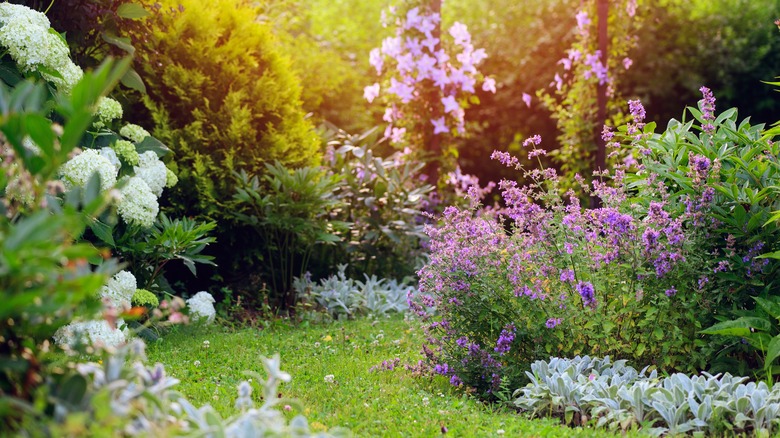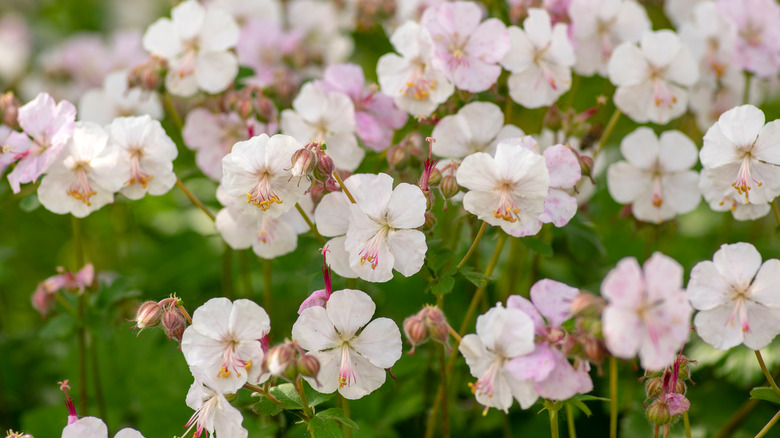The Cheery Flowering Perennial That Will Elevate Your Patchy Garden
Good ground cover can be hard to find. Acquiring a flowering ground cover that's attractive most of the year, isn't too aggressive, produces flowers that rabbits do not eat, and isn't too precious about its care needs is a big ask. If you're looking for a plant that meets all of the above criteria to fill in some bare spots in your garden, you may want to take a second look at a great geranium: Geranium x cantabrigiense 'Biokovo,' often called 'Biokovo' cranesbill.
This particular variety is part of a subgroup of the geranium family (Geraniaceae) known commonly as the hardy or cranesbill geraniums. 'Biokovo' is actually a naturally occurring hybrid that hails from Croatia's Biokovo Mountains. This cultivar forms low mounds or mats of lobed, fragrant foliage, putting out beautiful clusters of pink-blushed white blooms from late spring to mid-summer.
A rhizomatous plant — meaning it spreads via horizontal runners — 'Biokovo' cranesbill can create carpets two to three feet wide. Even better, it isn't considered invasive and can be easily controlled by simply pulling up unwanted shoots. It's an excellent choice for part-shade to full sun ground cover, as well as for rock gardens and edging. Given time and proper care, it can naturalize, and when planted on sloping terrain, it can help curtail erosion.
Growing and caring for 'Biokovo' cranesbill
One of the best attributes of 'Biokovo' is its ease of care and maintenance. This low-growing perennial thrives in USDA Hardiness Zones 5 through 8 (though success has also been reported by some gardeners in zone 4) in well-draining soil of average quality. It can tolerate some drought but is at its best in moist (but not wet!) soil. Because of its hybrid nature, 'Biokovo' cranebill's blooms are sterile, so it is best propagated by division.
Other than a good drink of about a half-inch of water every 7 to 10 days, its care needs are few. The sheer number of blooms makes deadheading both unnecessary and unrealistic, but in order to keep up a neat appearance and prevent unwanted spreading, you may want to remove any unruly side stems. After the majority of the blooms are spent in summer, you can prune the stems back to encourage new growth. Pruning your cranesbill back when it goes dormant in the fall, you can cut back the dead leaves and stems for a tidier look.

